Understanding line plots Worksheets for Ages 7-9
10 filtered results
-
From - To
Help your child master essential math skills with our "Understanding Line Plots Worksheets for Ages 7-9." Perfectly tailored for young learners, these engaging worksheets simplify the concept of line plots through fun and interactive exercises. Kids will enhance their ability to collect, analyze, and interpret data while boosting their confidence in math. Ideal for teachers and parents, these printable activities offer a variety of problems that make learning enjoyable and effective. Prepare your student for academic success by exploring line plots effortlessly. Visit Kids Academy to download and print these excellent educational resources today.
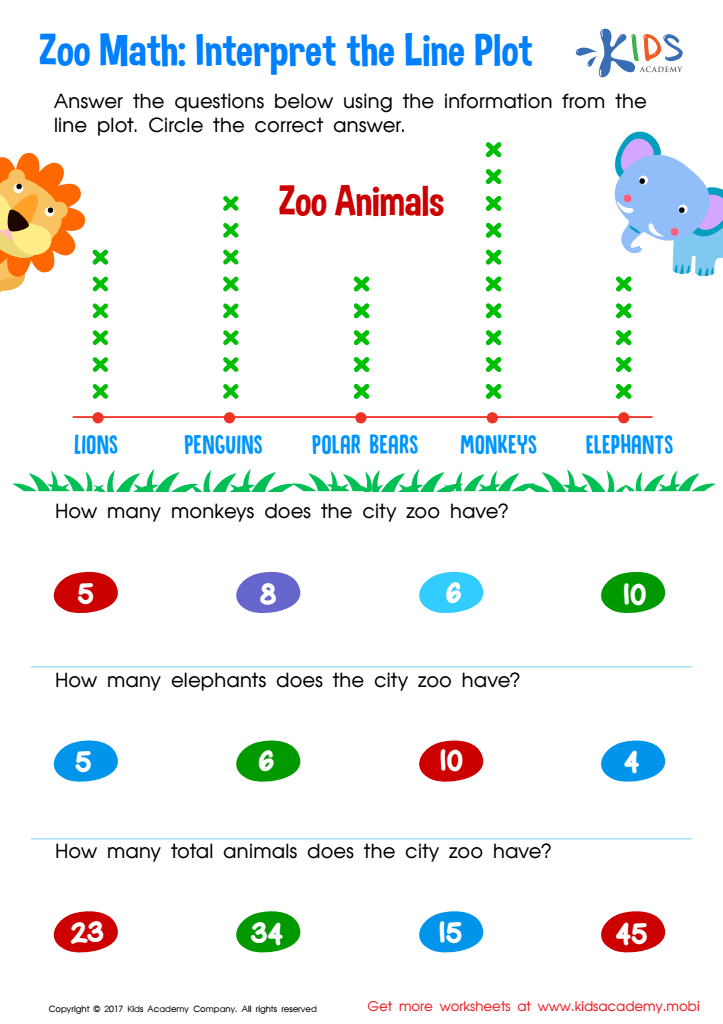

Interpret Line Plot Worksheet
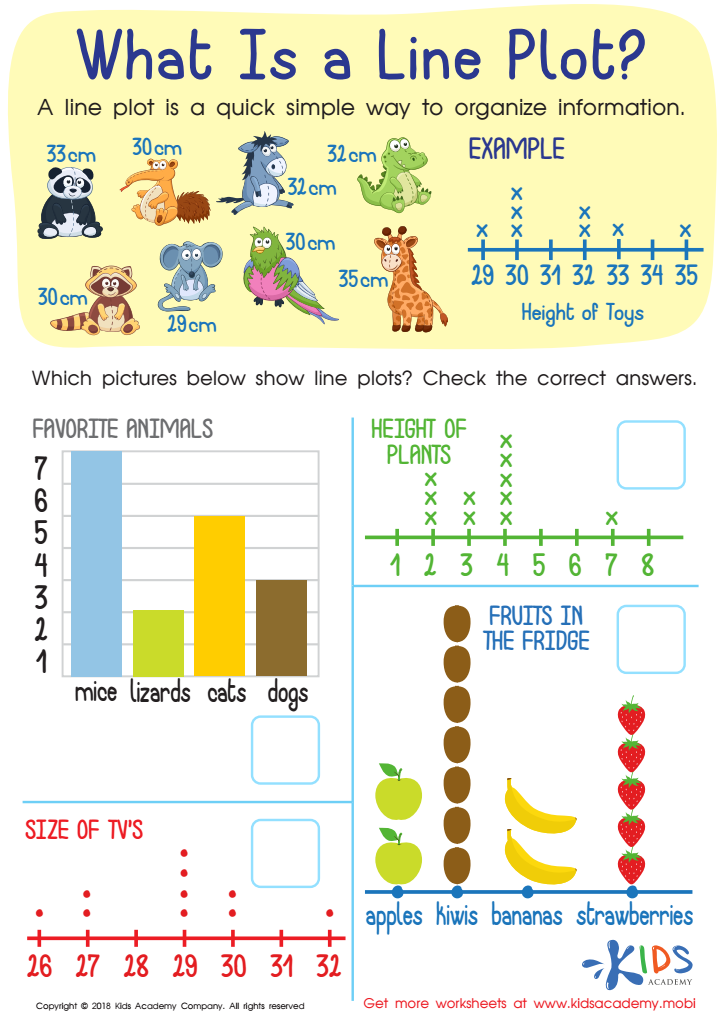

What Is a Line Plot? Worksheet
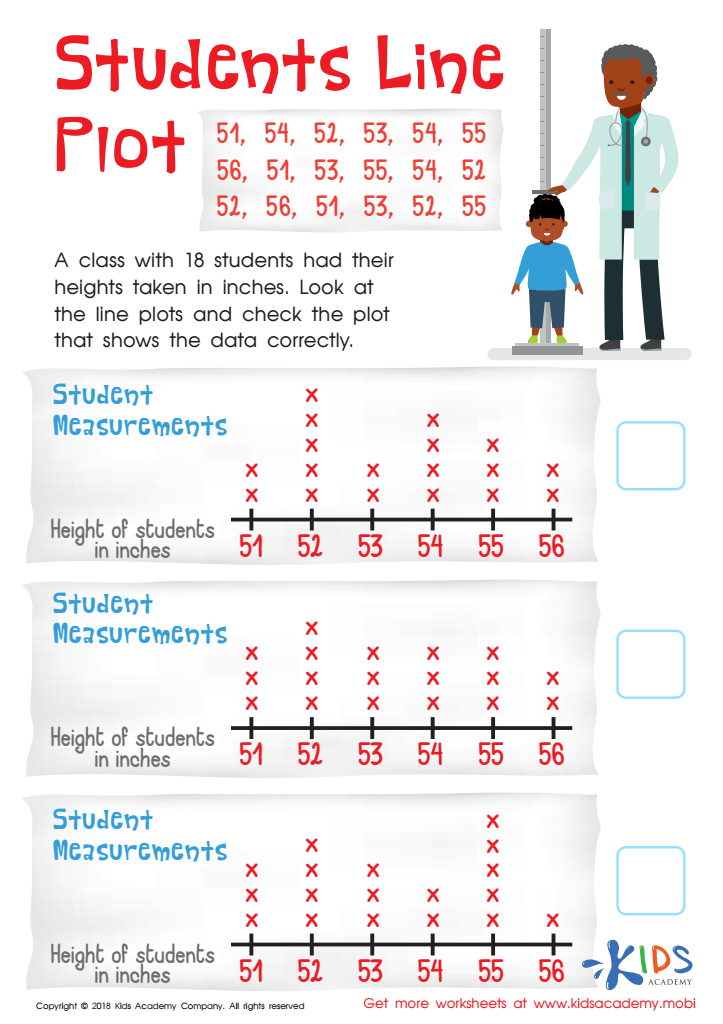

Students Line Plot Worksheet
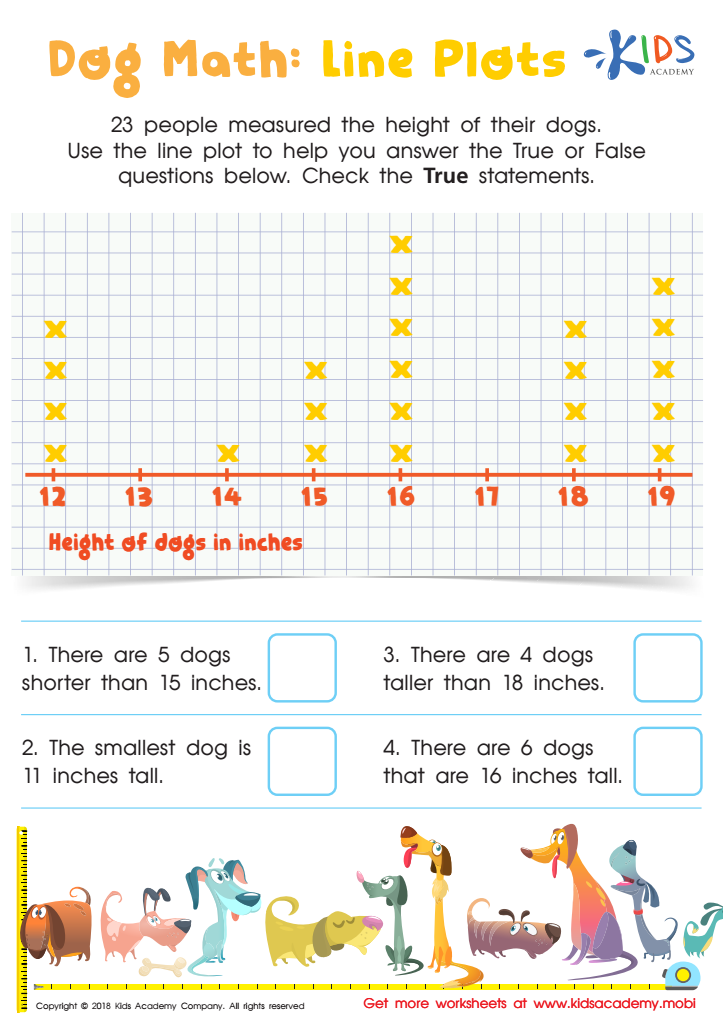

Dog Math: Line Plots Worksheet
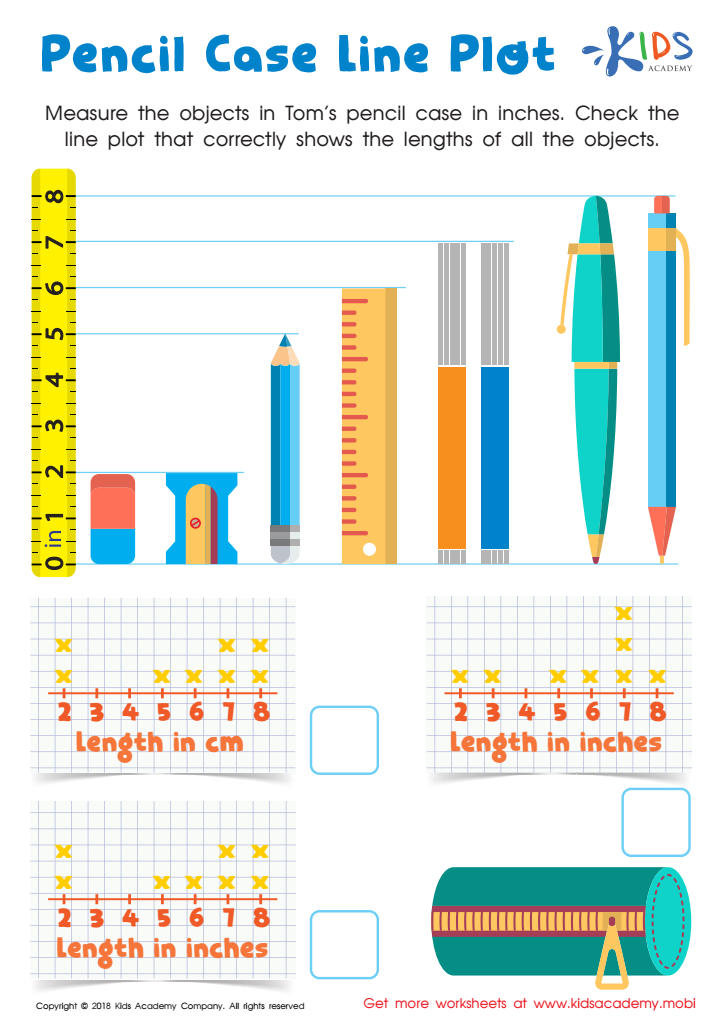

Pencil Case Line Plot Worksheet
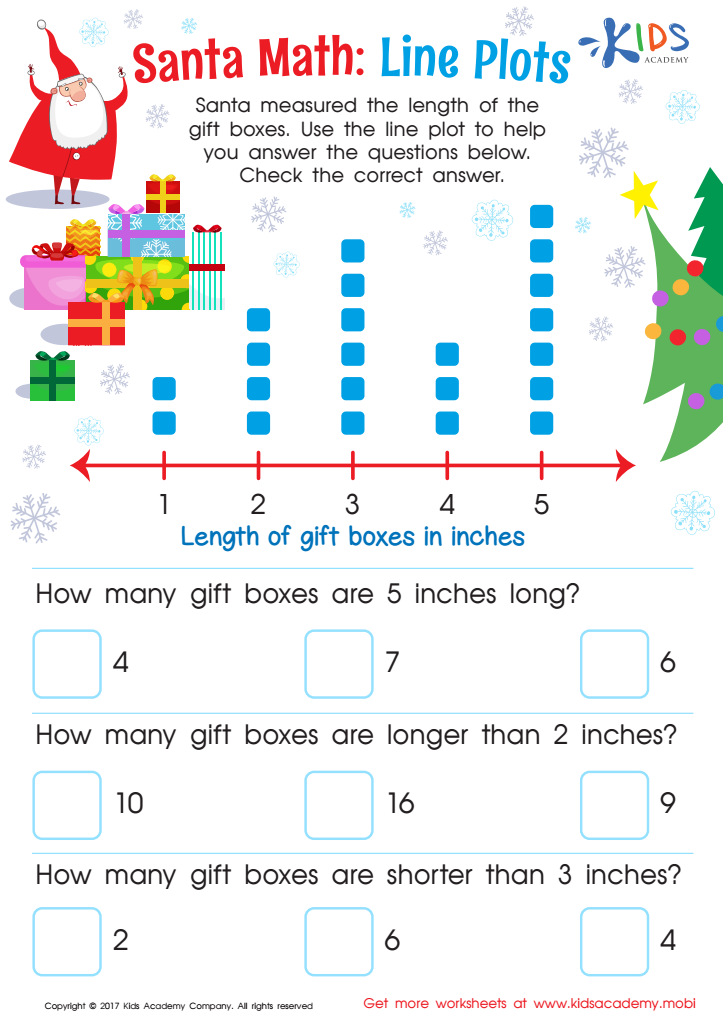

Line Plot Worksheet
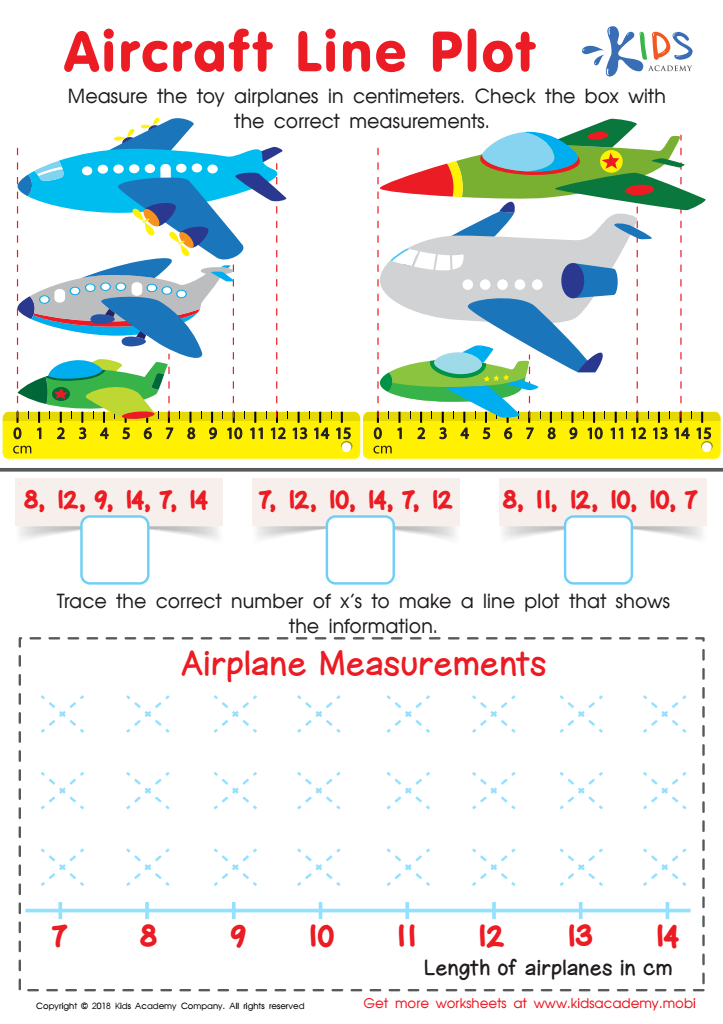

Aircraft Line Plot Worksheet
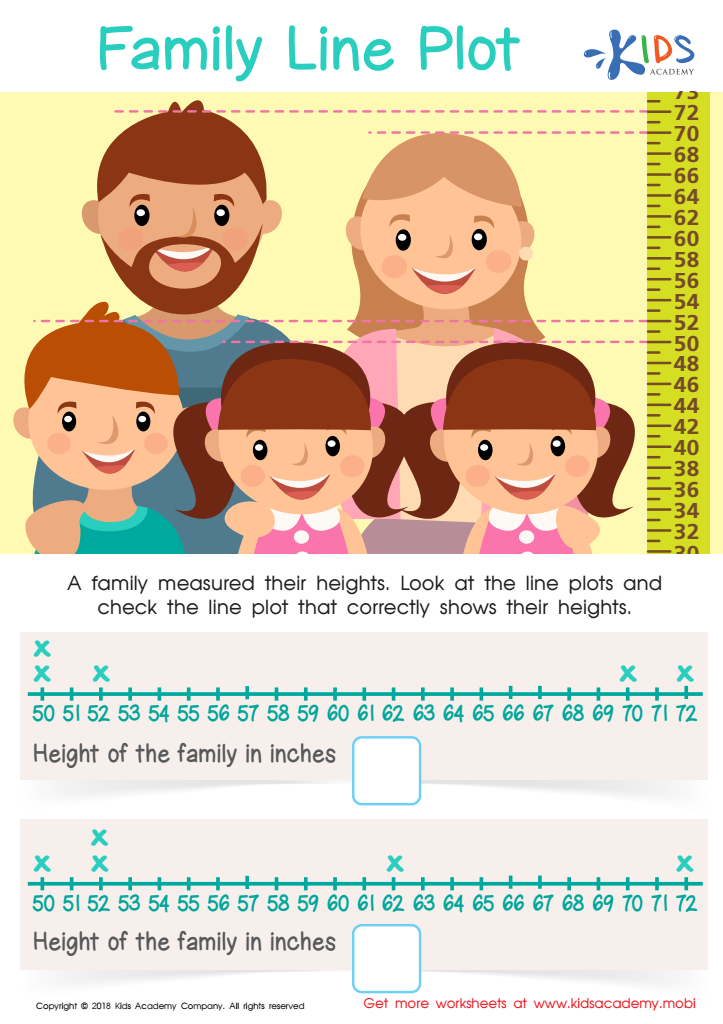

Family Line Plot Worksheet
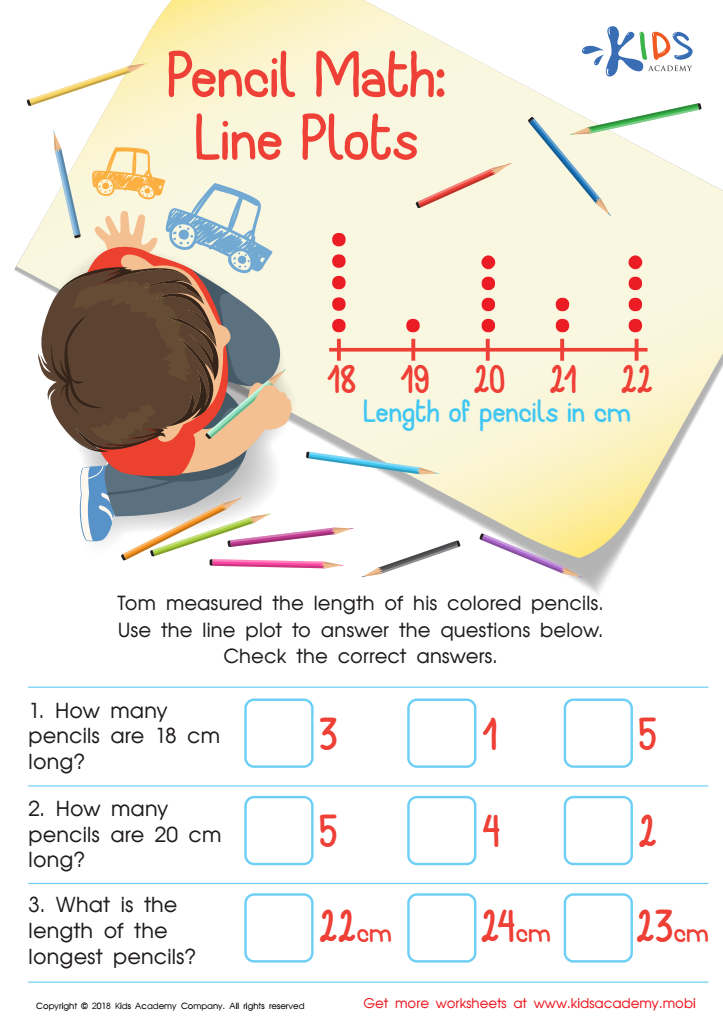

Pencil Math: Line Plots Worksheet
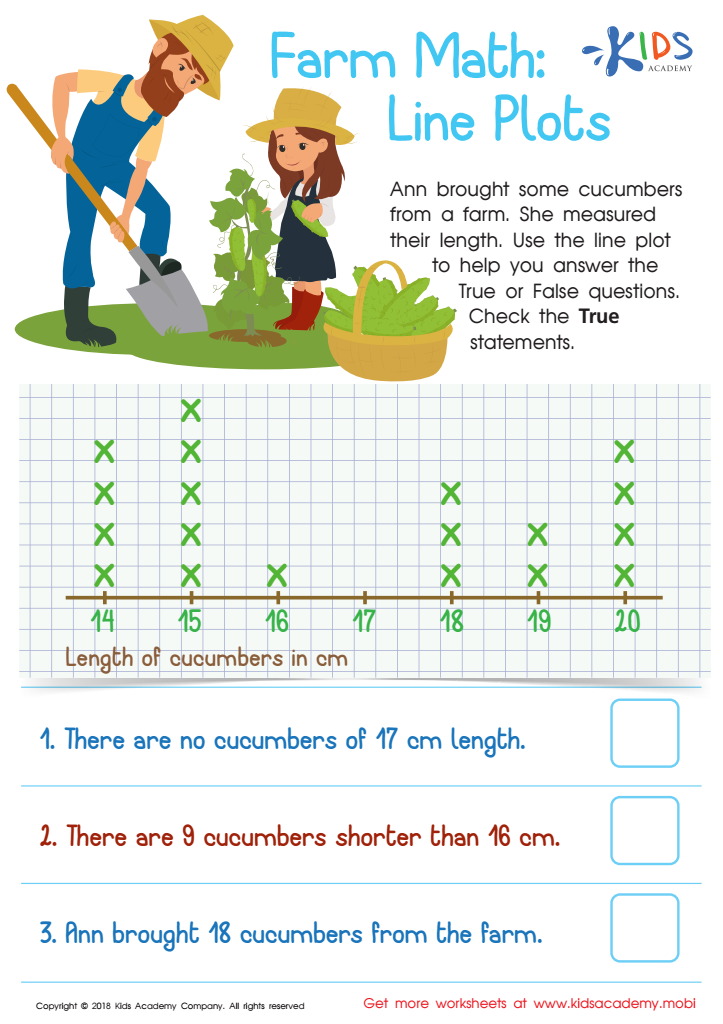

Farm Math: Line Plots Worksheet
Understanding line plots is crucial for children aged 7-9 because it forms a foundational math and analytical skill that will benefit them throughout their education and everyday life.
Firstly, line plots introduce basic data interpretation and visualization skills. These skills help children learn how to collect, organize, and represent data, which is essential for understanding more complex mathematical concepts later. By learning to create and read line plots, children can grasp how information can be conveyed visually, making abstract numbers more concrete.
Secondly, engaging with line plots enhances critical thinking and problem-solving abilities. Children learn to ask questions about the data: What is the most common value? Are there any outliers? What does the data tell us about a real-world situation? Answering these questions promotes logical reasoning and analytical skills.
Thirdly, line plots tie in with other parts of the curriculum. They are practical for subjects like science, where students may need to record experimental results, or social studies, where they might track historical data or population changes. By mastering this skill early, children become more adept across multiple subjects.
Lastly, proficient data skills are increasingly valuable in our data-driven world. Cultivating an understanding of line plots at a young age sets the stage for future competence in mathematics, science, and beyond, empowering children to become informed and thoughtful individuals.
 Assign to My Students
Assign to My Students















